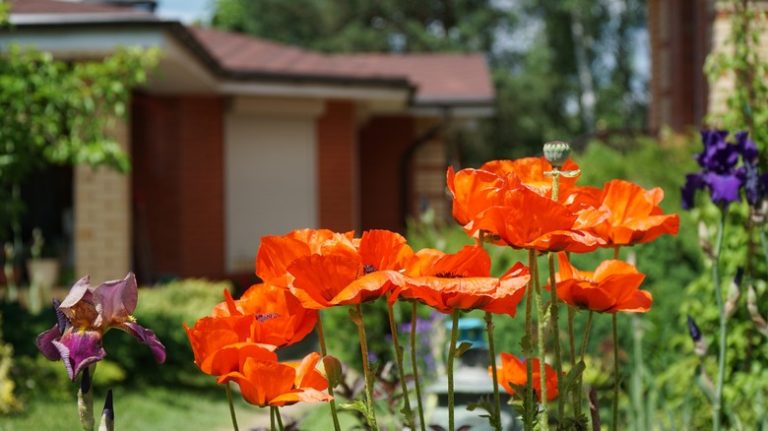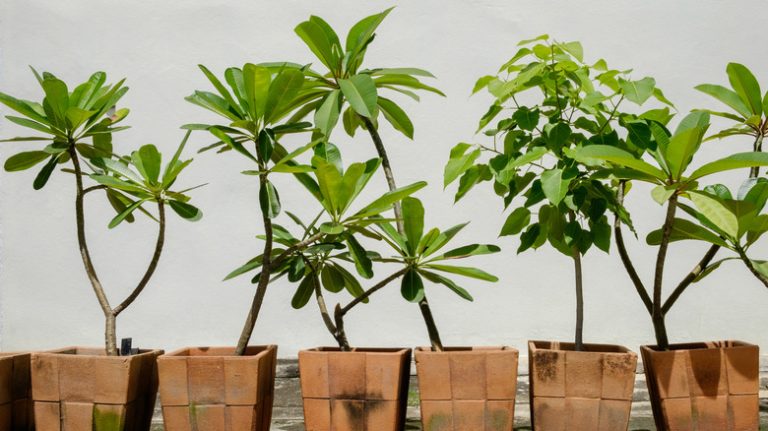Geranium leaves are an essential part of the geranium plant. They come in various shapes and sizes, with some being lobed and others being serrated. The leaves of the geranium plant are highly heat-tolerant and can withstand both cold and hot temperatures.
One of the reasons why geranium leaves are so popular among gardeners is because they have a pleasant smell when touched. The flowers of the geranium plant also come in a variety of colors, including pink, yellow, white, and red. The flowers are often grown in planters and can add a pop of color to any garden.
When it comes to caring for geranium leaves, it is important to provide them with well-drained soil and plenty of sunlight. Geranium leaves will grow best in full sun, although they can tolerate partial shade. In terms of watering, it is important to avoid overwatering as this can lead to root rot. Underwatering, on the other hand, can cause the leaves to become dry and brown.
If you have any questions about geranium leaves, you can consult a gardening expert who can provide tips and advice on how to care for them. Some common questions include how often to water geranium leaves, what types of fertilizer to use, and when to prune them. It is also important to be aware of common diseases and pests that can affect geranium leaves, such as whitefly and fungi. Invasive geranium species may also need to be controlled using herbicides.
In conclusion, geranium leaves are a beautiful and versatile addition to any garden. Whether you are growing them for their fragrance, their colorful flowers, or their heat tolerance, geranium leaves are sure to bring joy to any gardener. With proper care and attention, these plants will thrive and provide years of beauty.
Источник: 7 Reasons Why Gardener’s Love Geranium Leaves by Grumpy Gardener
How To Grow And Care For Geranium
Geraniums are beautiful and versatile plants that are popular among gardeners. They come in a variety of colors and fragrances, making them a popular choice for flower beds, hanging baskets, and potted plants. If you want to learn how to grow and care for geraniums, here are some tips to help you get started.
- Choose the right type: Geraniums come in many different types, including zonal, ivy-leaved, regal, and scented geraniums. Each type has its own unique features and growth habits, so make sure to choose the one that suits your needs.
- Planting and culture: Geraniums prefer well-drained soil and should be planted in a location that receives at least 6 hours of sunlight per day. They can be planted in the ground or in containers, but make sure to provide adequate spacing between plants to prevent diseases and pests.
- Watering: Geraniums need regular watering, especially during hot summer months. However, overwatering can cause root rot, so make sure not to let the soil stay too wet. It’s also important to water the plants in the morning or early afternoon to give them enough time to dry before nightfall.
- Fertilizing: Geraniums are heavy feeders and need regular doses of nutrients. Use a balanced, water-soluble fertilizer every 2-3 weeks during the growing season to promote healthy growth and abundant blossoms.
- Overwintering: Geraniums are sensitive to frost and should be brought indoors or protected during winter. Before overwintering, cut back the plants by about one-third, remove any diseased or damaged leaves and stems, and place them in a cool, dark location.
- Pests and diseases: Geraniums can be affected by various pests and diseases, including whitefly, aphids, spider mites, and gray mold. Regular inspection and proper management, such as spraying with insecticidal soap or removing affected parts, can help prevent and control these issues.
By following these tips, you can successfully grow and care for geraniums and enjoy their beautiful flowers and fragrances in your garden or home. Remember to provide them with the right sunlight, water, and nutrients, and be attentive to any signs of pests or diseases. With proper care, your geraniums will thrive and bring color and joy to your surroundings.
Plant Attributes
Geranium leaves have several attractive plant attributes that make them a popular choice among gardeners. These attributes include their lovely foliage, fragrances, and vibrant flower colors.
Geraniums are known for their lush, dense foliage, which is often deeply lobed or serrated along the margin. This foliage can come in various shades of green, depending on the specific variety. Geranium leaves can also release pleasant fragrances when lightly brushed or crushed, with scents ranging from nutmeg to lavender.
When it comes to their flowers, geraniums offer a wide range of colors, including red, pink, purple, white, and various shades in between. The flowers typically have five petals and often show dark markings or veins, adding interest to their appearance.
Geraniums are hardy plants suitable for a variety of growing conditions. They can thrive in full sunlight but can also tolerate partial shade. In terms of temperature, geraniums are most commonly grown in zones 10-11, but certain varieties can withstand colder temperatures down to zone 6. It’s important to note that geraniums are not frost-tolerant and should be overwintered indoors or moved to a protected place during freezing temperatures.
To ensure the health and vitality of your geranium plants, proper management and care is important. Geraniums require regular watering, especially during hot and dry periods, to prevent wilting. However, overwatering should be avoided to prevent root rot and other water-related diseases. Applying a slow-release fertilizer once every few weeks can provide the necessary nutrients for vigorous growth and abundant blooms.
Geraniums can be susceptible to a few different diseases and pests, including rust, fungi, and mites. To prevent these issues, it’s recommended to provide good air circulation around the plants, avoid overcrowding, and promptly remove any infected leaves or plants. Using an herbicide labeled for use on geraniums can help control weeds and prevent competition for resources.
In conclusion, geraniums are versatile and attractive plants that offer beautiful flowers, variety in foliage, and lovely fragrances. With the right care and management, they can thrive in a range of conditions and add vibrant colors to your garden or container displays.
Geranium Care
Geraniums are a popular type of plant known for their vibrant blooms and fragrant flowers. They come in many different varieties, including the common garden geranium (Pelargonium x hortorum) and the ivy geranium (Pelargonium peltatum).
When it comes to geranium care, there are several important factors to consider. Firstly, geraniums thrive in full sun and prefer at least 6 hours of direct sunlight each day. They can tolerate some shade but will produce fewer flowers in these conditions.
The temperature is also an important factor in geranium care. Geraniums prefer moderate temperatures, around 70-85 degrees Fahrenheit (21-29 degrees Celsius) during the day and slightly cooler temperatures at night. If the temperature drops below 45 degrees Fahrenheit (7 degrees Celsius), it can cause damage to the plant.
Geraniums also require well-draining soil, as they are prone to root rot if the soil becomes waterlogged. Regular watering is important, but be sure not to overwater as this can also lead to root rot. It is best to wait until the top inch of soil is dry before watering again.
Fertilizing geraniums is another important aspect of care. Use a balanced fertilizer with a ratio of 10-10-10, applying it every 4-6 weeks during the growing season. Be sure to follow the package instructions for the correct amount to use.
Pruning geraniums is not necessary for their overall health, but it can help to improve their appearance and encourage more blooms. Prune off any dead or discolored leaves or flowers, as well as any branches that are yellow or withered.
Geraniums can be prone to certain pests, such as aphids, mites, and rust. If you notice any signs of pest infestation, such as yellowing leaves or sunken areas on the leaves, it is important to take action to prevent further damage. There are various organic and chemical pest control options available, so check with your local garden center for more information and recommendations.
When it comes to overwintering geraniums, there are a few options. Some gardeners choose to bring their geraniums indoors before the first frost, while others prefer to let them die back and then replant in the spring. If you choose to bring them indoors, be sure to provide plenty of sunlight and keep the temperature around 65-75 degrees Fahrenheit (18-24 degrees Celsius).
In conclusion, proper care is essential for the health and success of geraniums. By following these tips and providing the right conditions, you can enjoy beautiful and vibrant blooms from your geranium plants.
Light
Light is crucial for the foliage of geraniums to thrive. Depending on the types of geraniums, their light needs vary highly. While some geraniums, like the heat-tolerant pelargoniums, prefer full sun and can tolerate hot temperatures, others, such as the geraniums of the coastal zones, do better in partial shade.
For my geraniums, I have found that they do best with at least 6 hours of direct sunlight each day. If they don’t get enough light, their leaves may become discolored or sunken, and the plant might not produce as many flowers. However, excessive direct sunlight can cause damage as well, leading to leaf wilting or scorched foliage.
During the winter, when the light levels are lower, my geraniums have less intense light and their growth slows down. To keep them healthy during this time, I move them to a south-facing window or provide artificial light from fluorescent bulbs.
In outdoor plantings, geraniums can be placed in a location that receives morning sun and afternoon shade to protect them from the harshest sun and heat of the day.
Geraniums are generally considered sun-loving plants, but it’s essential to understand the specific light requirements for each type and adjust accordingly.



